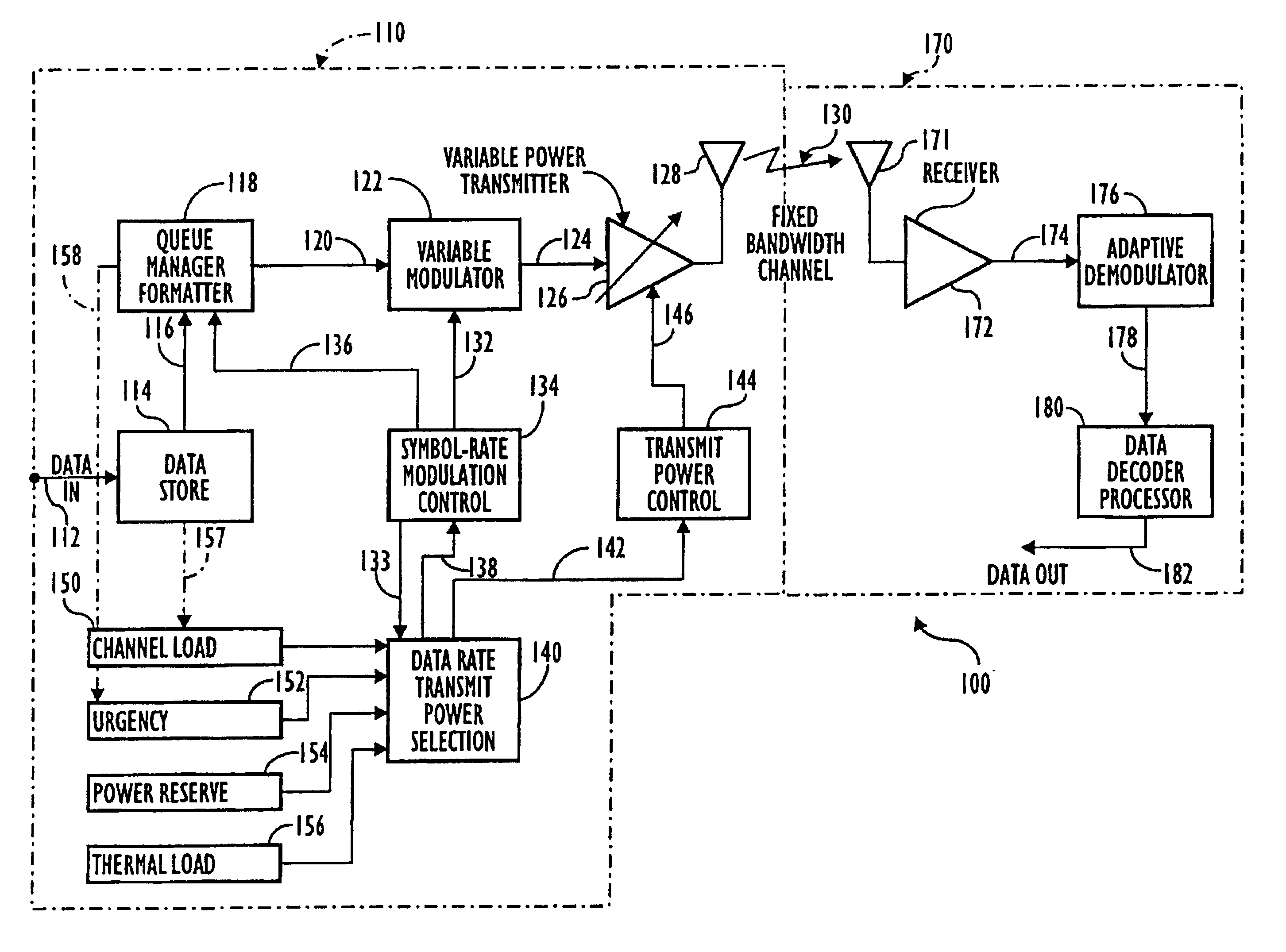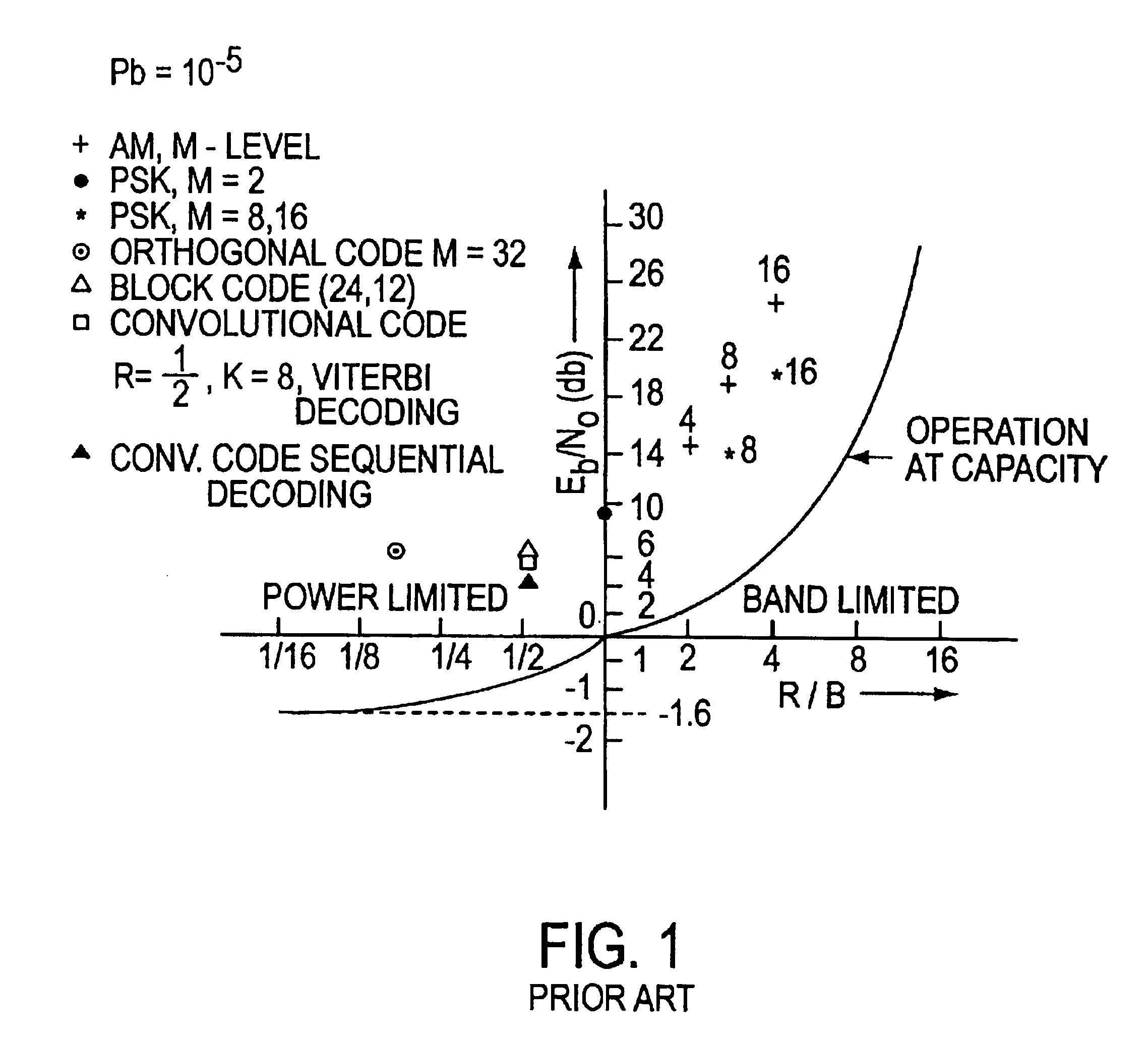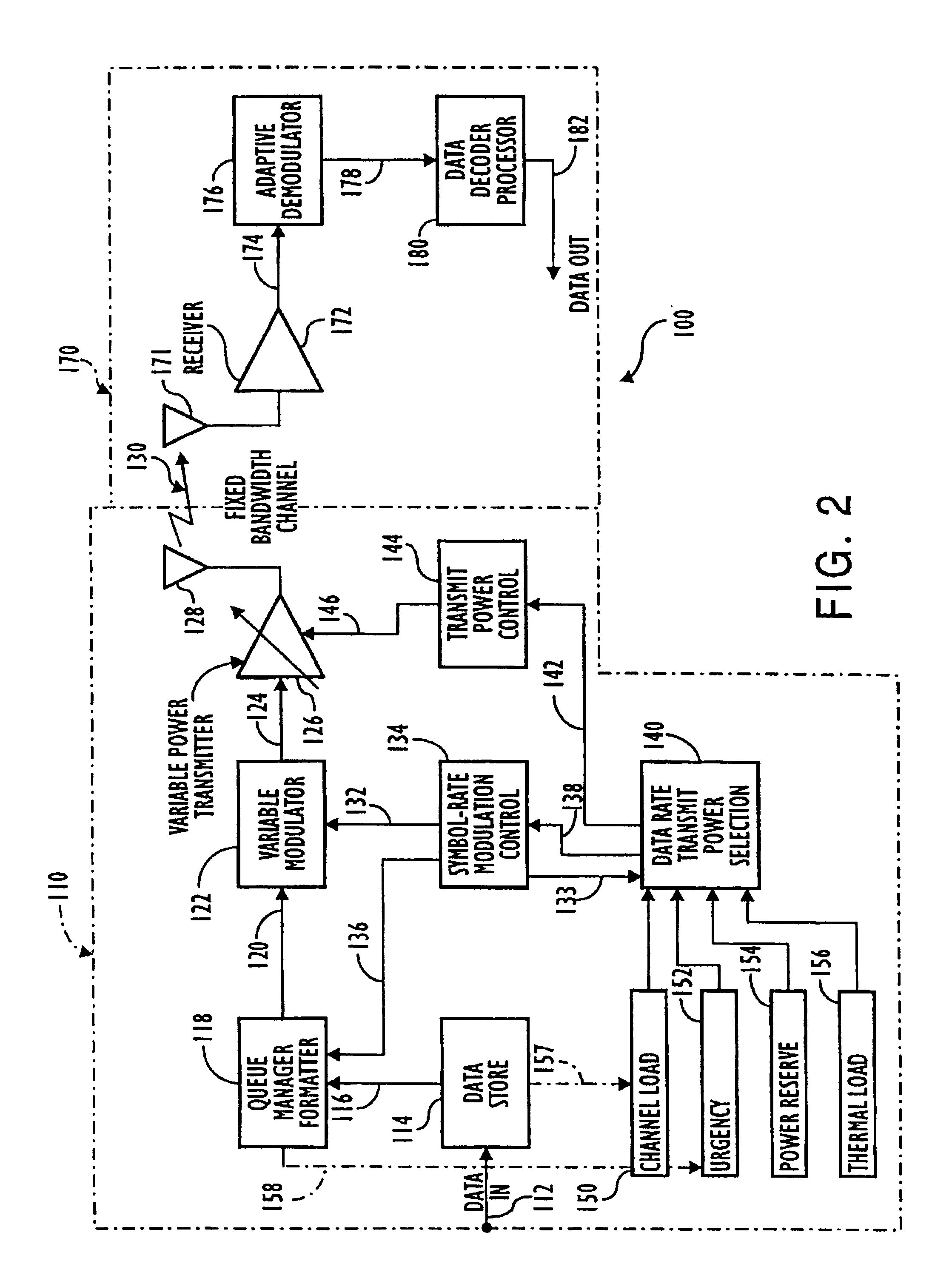Demand-based power and data rate adjustments to a transmitter to optimize channel capacity and power usage with respect to data transmission traffic over a fixed-bandwidth channel
- Summary
- Abstract
- Description
- Claims
- Application Information
AI Technical Summary
Benefits of technology
Problems solved by technology
Method used
Image
Examples
Embodiment Construction
[0030]Referring now to FIG. 2, there is shown a schematic diagram of a communication system which is designated generally by the numeral 100. Features and advantages of the present invention will be described in reference to the communication system 100. It is understood that data may be received for transmission by the system 100 from any number of data sources, which may be colocated with the transmit subsystem 110, or located remotely and connected to the transmit subsystem via standard, fixed data links. The data sources, and their links with the transmit subsystem 110 are not separately shown. In the preferred embodiment, a transmit subsystem 110 is depicted to receive data, which may be data messages having a given length, as a data input via a data port (DATA IN) at 112. Any desirable data source or number of data sources may be coupled to the data port 112. In this regard, the physical data port 112 represents typical data input provisions, such as standard telephone connect...
PUM
 Login to View More
Login to View More Abstract
Description
Claims
Application Information
 Login to View More
Login to View More - R&D
- Intellectual Property
- Life Sciences
- Materials
- Tech Scout
- Unparalleled Data Quality
- Higher Quality Content
- 60% Fewer Hallucinations
Browse by: Latest US Patents, China's latest patents, Technical Efficacy Thesaurus, Application Domain, Technology Topic, Popular Technical Reports.
© 2025 PatSnap. All rights reserved.Legal|Privacy policy|Modern Slavery Act Transparency Statement|Sitemap|About US| Contact US: help@patsnap.com



